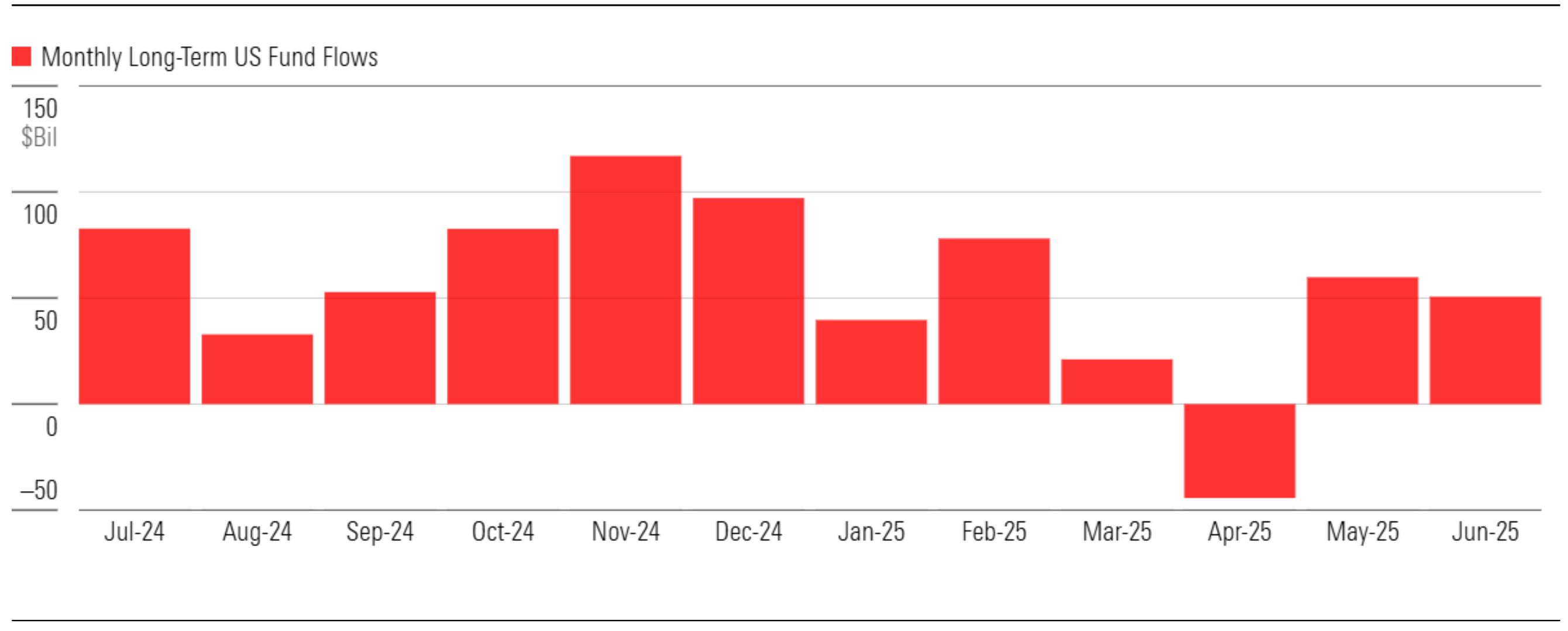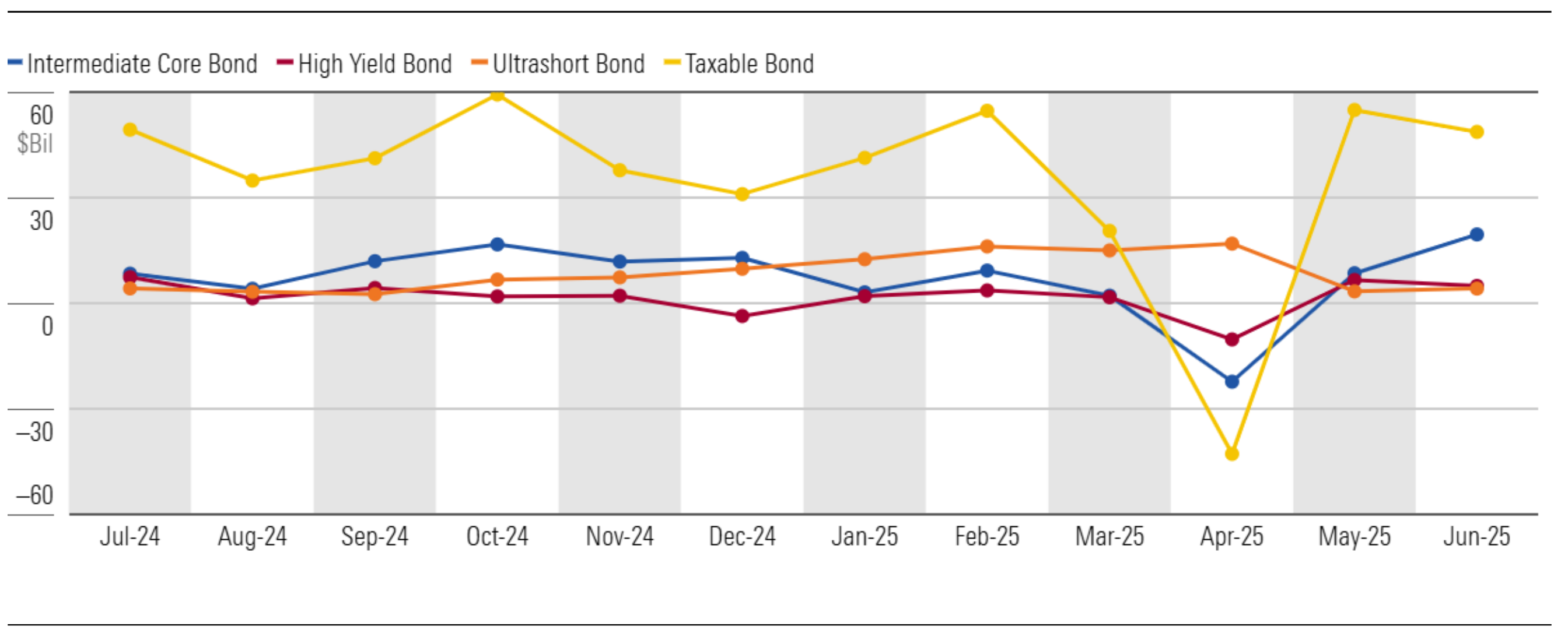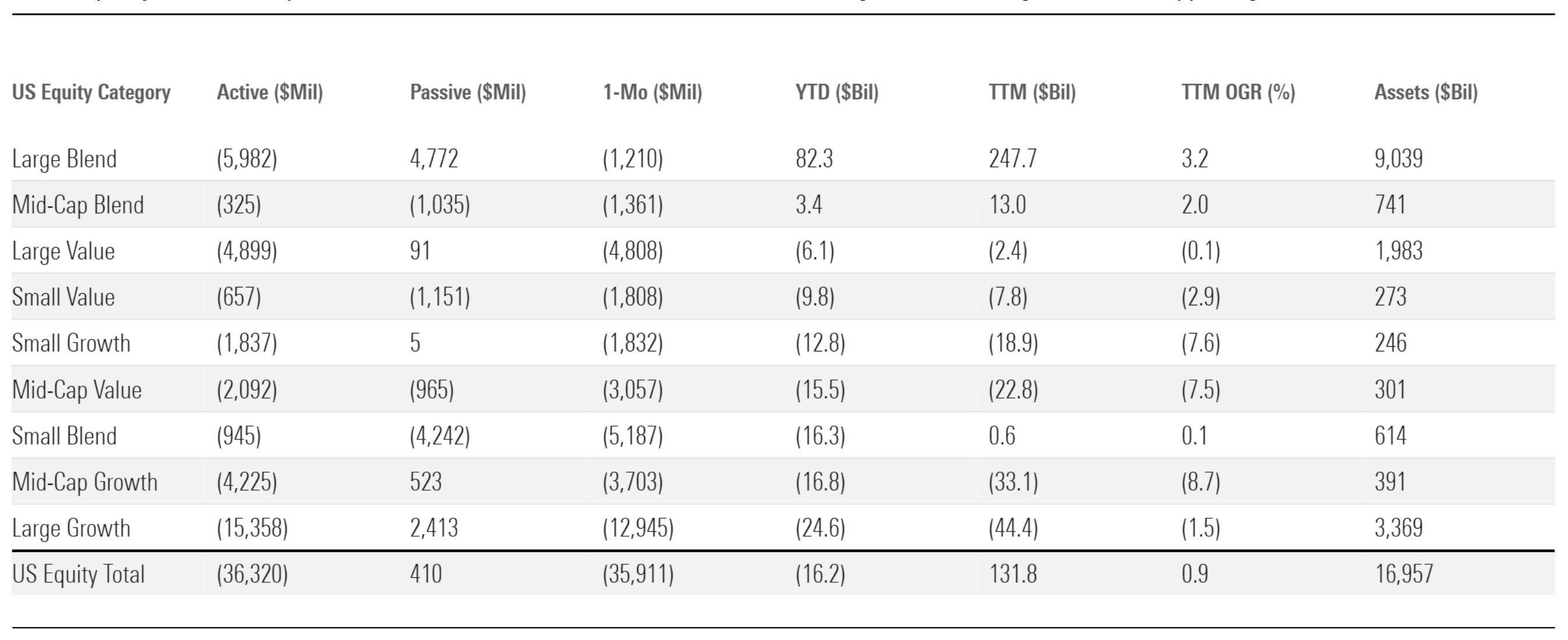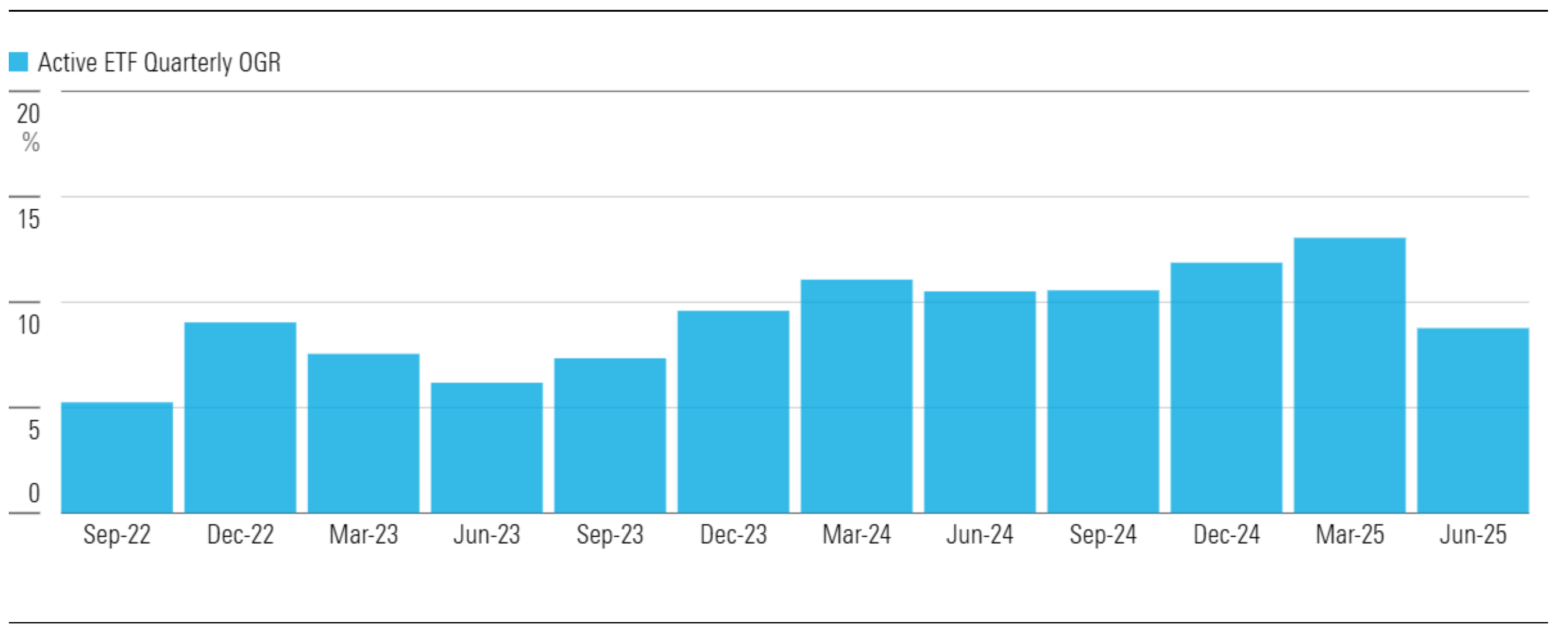5 min read
US Fund Flows: June Bond Inflows Hit Four-year High as US Equities Face Sharp Outflows
Investors added $50 billion to long-term funds, led by taxable bonds, while US equity funds saw their steepest outflows in over three years despite the market rally.

Key Takeaways

Source: Morningstar Direct Asset Flows. Data as of June 30, 2025.
Navigating Market Volatility Through Fund Flows Data
Intermediate Core Bond Funds Achieve Their Highest Inflow in 4 Years

Source: Morningstar Direct Asset Flows. Data as of June 30, 2025.
All but Two US Equity Categories Lose Assets in 2025’s First Half

Source: Morningstar Direct Asset Flows. Data as of June 30, 2025.
Active ETFs’ Rapid Ascent Slows Slightly

Source: Morningstar Direct Asset Flows. Data as of June 30, 2025. Organic Growth Rate = OGR